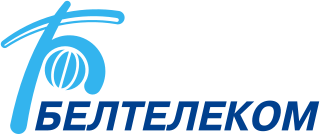Telecommunications in Burkina Faso include radio, television, fixed and mobile telephones, and the Internet.
Telecommunications in Ireland operate in a regulated competitive market that provides customers with a wide array of advanced digital services. This article explores Ireland's telecommunications infrastructure including: fixed and mobile networks, The voice, data and Internet services, cable television, developments in next-generation networks and broadcast networks for radio and television.
The primary regulator of telecommunications in Malaysia is the Malaysian Communications and Multimedia Commission (MCMC). It issues licenses under the Communications and Multimedia Act 1998, the Postal Services Act 2012 and the Digital Signature Act 1997.
The following is an outline of communications technology in Morocco.

The telecommunications in Russia has undergone significant changes since the 1980s, radio was a major new technology in the 1920s, when the Communists had recently come to power. Soviet authorities realized that the "ham" operator was highly individualistic and encouraged private initiative – too much so for the totalitarian regime. Criminal penalties were imposed but the working solution was to avoid broadcasting over the air. Instead radio programs were transmitted by copper wire, using a hub and spoke system, to loudspeakers in approved listening stations, such as the "Red" corner of a factory. This resulted in thousands of companies licensed to offer communication services today. Due to the enormous size of the country Russia today, the country leads in the number of TV broadcast stations and repeaters. The foundation for liberalization of broadcasting was laid by the decree signed by the President of the USSR in 1990. Telecommunication is mainly regulated through the Federal Law "On Communications" and the Federal Law "On Mass Media"
Telecommunications in Saudi Arabia have evolved early in the Kingdom since the establishment the Directorate of Post, Telephone and Telegraph (PTT) in 1926.
Telecommunications in Slovakia includes fixed and mobile telephones, radio, television, and the Internet.

Telecommunications infrastructure in South Africa provides modern and efficient service to urban areas, including cellular and internet services. The Independent Communications Authority of South Africa (ICASA) is the watchdog of the telecommunications in the country.
Telecommunications in Eswatini includes radio, television, fixed and mobile telephones, and the Internet.
Portugal has a modern and flexible telecommunications market and a wide range of varied media organisations. The regulatory body overseeing communications is called ANACOM.

Telecommunications in Armenia involves the availability and use of electronic devices and services, such as the telephone, television, radio or computer, for the purpose of communication. The various telecommunications systems found and used in Armenia includes radio, television, fixed and mobile telephones, and the internet.
Telecommunications in Austria encompass highly developed and efficient internet and telephone networks, complemented by a number of radio and television broadcast stations.
Telkom SA SOC Limited is a South African wireline and wireless telecommunications provider, operating in more than 38 countries across the African continent. Telkom is majority state-owned (55.3%) with the South African government owning 40.5% of Telkom, while another 14.8% is owned by another state-owned company - the Public Investment Corporation (PIC), which is closely linked to the South African government.
Telecommunications in Montenegro includes radio, television, fixed and mobile telephones, and the Internet.

The Internet in South Africa, one of the most technologically resourced countries on the African continent, is expanding. The internet country code top-level domain (ccTLD) .za is managed and regulated by the .za Domain Name Authority (.ZADNA) and was granted to South Africa by the Internet Corporation for Assigned Names and Numbers (ICANN) in 1990. Over 60% of Internet traffic generated on the African continent originates from South Africa. As of 2020, 41.5 million people were Internet users.
Internet access is widely available in New Zealand, with 94% of New Zealanders having access to the internet as of January 2021. It first became accessible to university students in the country in 1989. As of June 2018, there are 1,867,000 broadband connections, of which 1,524,000 are residential and 361,000 are business or government.

Internet in Moldova is one of the fastest and least expensive in the world. The country ranks 3rd in the world by gigabit coverage with around 90% of the population having the option to subscribe to a gigabit plan. The overall infrastructure is well developed which allows many users to experience good quality services throughout the country. However, despite high speeds and cheap prices, the penetration level is quite low when compared with many EU or CIS countries. In 2018, 49% of Moldovan households had broadband access. In 2015, there were 80 registered Internet Service Provider's (ISP's) in the country, with the majority being local or regional with only a few offering their services throughout the country. Moldtelecom and StarNet are the country's leading providers sharing around 88% of the market. The remaining 12% are shared between other ISPS, like SunCommunications, Arax Communications and others. Almost all ISPs that offer their services across the country have their headquarters located in the capital-city of Chişinău.
Telecommunications in Angola include telephone, radio, television, and the Internet. The government controls all broadcast media with a nationwide reach.
Telecommunications in Ivory Coast include radio, television, fixed and mobile telephones, and the Internet.

Republican unitary enterprise Beltelecom is the national telecommunications company in Belarus, fully owned by the Government of Belarus and operated by the Ministry of Telecommunications. Beltelecom has a network of fiber-optic trunk lines and is the sole provider of fixed telephony in Belarus. It provides long-distance and international calls, and broadband access to the Internet via ADSL, and Wi-Fi services.






